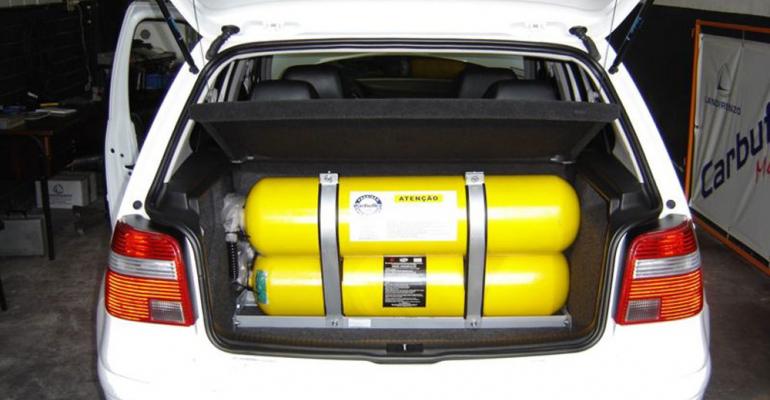Researchers at the U.S. Department of Energy’s Pacific Northwest National Laboratory in Richland, WA, develop a new breed of lightweight, space-saving compressed-natural-gas fuel tanks for vehicles.
The team headed by senior research scientist Kevin Simmons uses superplastic forming to create the new tank. Superplastic technology, combined with friction air welding, fuses the metal sheets together at specific points. Air is blown in between the sheets to expand them and form internal chambers similar to an air mattress.
The new tank will fit more readily into a vehicle than traditional cylinders and, because it is so conformable, it can fit under the floor of a car. Also, the conformability helps achieve volumetric efficiencies that exceed 90% compared with rectangular tanks.
The superplastic tanks also weigh less, so they contribute to higher fuel economy. PNNL estimates the tanks will cost less than $1,500 to build and accommodate 12 megajoules of energy per kilogram – about double the energy density of conventional metal CNG tanks used today. PNNL estimates material costs at less than $750.
PNNL is collaborating with Lincoln Composites of Lincoln, NE, in the project. Lincoln is a maker of CNG tanks for buses and trucks and has many years of experience in pressure-vessel designs and testing.
The tank was recently displayed at the DOE's Energy Innovation Summit in National Harbor, MD.




